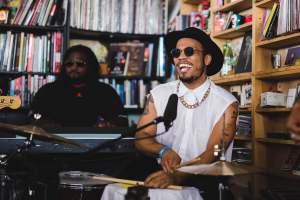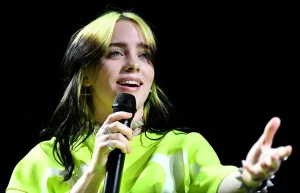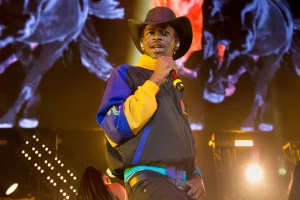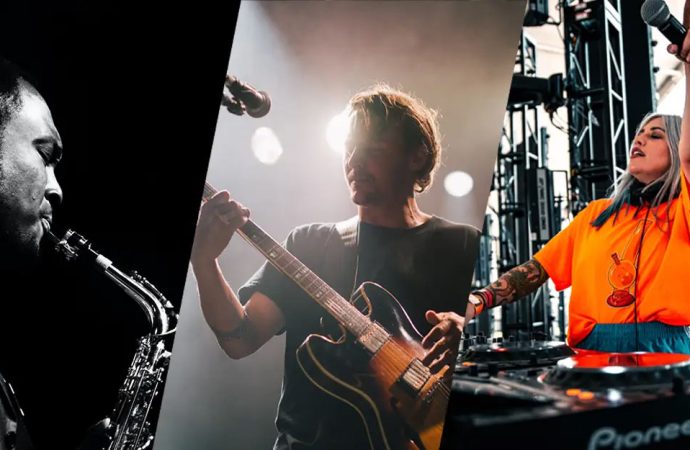Introduction In today’s diverse music landscape, blending genres has become a powerful tool for artists to expand their audience. The fusion of different musical styles not only attracts fans from various backgrounds but also creates unique sounds that resonate with a broader demographic. This article will explore how blending genres can enhance musical appeal, the
Introduction
In today’s diverse music landscape, blending genres has become a powerful tool for artists to expand their audience. The fusion of different musical styles not only attracts fans from various backgrounds but also creates unique sounds that resonate with a broader demographic. This article will explore how blending genres can enhance musical appeal, the benefits it brings to artists, and some notable examples of successful genre fusion.
The Rise of Genre Blending

Image by: Yandex.com
The music industry has witnessed a significant shift over the years, moving away from strict genre classifications to a more fluid understanding of musical expression. In the past, artists were often confined to one genre, making it challenging to reach audiences outside their fan base. However, as music streaming platforms and social media have gained prominence, listeners are now exposed to a wider variety of sounds and influences. This exposure has encouraged artists to experiment with different genres, leading to innovative musical styles that captivate diverse audiences.
Genre Blending and New Audiences
One of the biggest advantages of blending genres is its ability to attract new listeners. When artists combine two or more different styles of music, they can appeal to fans who may not have been interested in their work before. For example, a rock band incorporating electronic music elements can draw in fans of EDM, while a pop artist mixing in country music can tap into a whole new market. This cross-genre appeal is key for artists looking to grow their fan base and reach more people.
How Genre Blending Shapes Identity
Blending genres also allows artists to shape their musical identity in a unique way. Instead of being confined to a single category, artists can create a sound that reflects their diverse influences. This approach enables musicians to stand out and be known for their originality. Fans appreciate when artists break the mold and deliver something unexpected. By mixing genres, musicians can craft an identity that is both distinct and relatable, setting them apart from others in the industry.
The Role of Technology in Genre Blending
Technology has played a significant role in making genre blending easier and more accessible for artists. Today’s music production software allows musicians to experiment with sounds from different genres effortlessly. Artists can mix hip-hop beats with orchestral arrangements or combine electronic synths with acoustic guitars—all from their own home studio. This ability to fuse genres without needing expensive equipment or large recording studios has opened up endless possibilities for both seasoned and emerging artists.
Benefits of Blending Genres

Image by: Yandex.com
Blending genres can offer numerous advantages for artists looking to broaden their reach. Here are some key benefits:
- Increased Audience Reach: By combining elements from various genres, artists can attract fans from different musical backgrounds, effectively doubling their potential audience.
- Creative Freedom: Genre blending allows artists to express themselves more freely. They can draw inspiration from multiple sources, leading to more innovative and unique sounds.
- Market Differentiation: In a competitive music industry, standing out is crucial. Artists who successfully blend genres can carve out a distinct niche that sets them apart from others.
- Collaboration Opportunities: Blending genres often leads to collaborations with artists from different musical backgrounds, opening doors to new fan bases and increased visibility.
Strategies for Successful Genre Blending

Image by: Yandex.com
- Identify Compatible Genres: While blending genres, it’s important to choose styles that complement each other. Understanding the fundamental elements of each genre, such as rhythm, melody, and instrumentation, can help in creating a harmonious fusion.
- Experiment with Sounds: Experimentation is key to successful genre blending. Musicians should feel free to play with different instruments, production techniques, and vocal styles to discover unique combinations that resonate with their artistic vision.
- Collaborate with Other Artists: Collaborating with artists from different genres can provide fresh perspectives and inspire new ideas. These partnerships often lead to innovative projects that appeal to a wider audience.
- Stay Authentic: While it’s essential to explore new sounds, maintaining authenticity is crucial. Listeners are drawn to genuine expressions of artistry, so it’s important to stay true to one’s musical roots and personal style.
Notable Examples of Genre Blending

Image by: Yandex.com
Several artists have successfully blended genres, demonstrating the potential of this approach:
- Lil Nas X: His hit “Old Town Road” seamlessly combines country and rap, making it a crossover sensation and appealing to fans from both genres.
- Billie Eilish: Eilish fuses pop, electronic, and indie elements in her music, creating a sound that resonates with a wide audience, from teenagers to adults.
- The Weeknd: With a blend of R&B, pop, and hip-hop, The Weeknd has captured the attention of listeners across various demographics, resulting in commercial success.
- Post Malone: Post Malone is known for his genre-blending approach, incorporating elements of hip-hop, rock, and country into his music. This versatility has made him a prominent figure in the music industry, appealing to fans across multiple genres.
- Twenty One Pilots: Twenty One Pilots have successfully merged alternative rock, hip-hop, and electronic music to create a sound that resonates with a broad audience. Their innovative approach has garnered them a dedicated fan base and numerous accolades.
The Commercial Impact of Genre Fusion
From a commercial perspective, blending genres has proven to be a successful strategy. Many of today’s chart-topping hits feature elements from multiple genres, appealing to a wider audience and resulting in higher sales and streams. This approach not only benefits the artist but also record labels and streaming platforms that see the value in promoting cross-genre music. Popular music today is less about fitting into neat categories and more about creating songs that resonate with diverse listeners, which in turn boosts commercial success.
Collaboration and Genre Blending
Collaboration is another important aspect of genre blending. When artists from different musical backgrounds work together, they bring their unique styles to the table, resulting in a fusion of sounds that can be groundbreaking. Collaborations between artists from different genres often lead to some of the most innovative and exciting music. Examples include collaborations between pop and hip-hop artists, like Ariana Grande and Mac Miller, or rock and electronic artists, like Linkin Park and Steve Aoki. These partnerships highlight the creative potential of mixing genres.
The Role of Streaming Services

Image by: Yandex.com
Streaming services like Spotify and Apple Music have changed how we listen to music. These platforms allow listeners to explore various genres with just a click. This easy access encourages fans to try new styles. As a result, artists are more likely to experiment with blending genres. The success of mixed-genre tracks shows that listeners enjoy variety and are open to different sounds.
Social Media and Genre Blending
Social media plays a significant role in how music is shared and discovered. Platforms like TikTok and Instagram help songs go viral, regardless of their genre. Artists can showcase their genre-blending music through short clips or performances. This exposure helps them reach new audiences quickly. Social media allows fans to engage directly with artists, creating a strong connection that can lead to increased support and loyalty.
Success Stories of Genre Blending

Image by: Yandex.com
Many artists have successfully blended genres, showing the potential of this approach. Lil Nas X gained fame with “Old Town Road,” mixing country and rap, which helped him connect with fans from both genres. Billie Eilish combines pop, electronic, and indie styles, appealing to a wide audience from teenagers to adults. The Weeknd blends R&B, pop, and hip-hop, attracting listeners across various demographics. These success stories highlight how blending genres can lead to significant recognition and a larger fan base.
Challenges of Blending Genres
While blending genres has many benefits, it can also come with challenges. Some artists may face criticism from fans who prefer traditional sounds. There might be pressure to conform to specific genres to be successful. However, artists who stay true to their vision and continue to innovate often find that their unique sound attracts dedicated fans. Embracing these challenges can lead to growth and success in their careers.
Genre Blending in Different Cultures

Image by: Yandex.com
Blending genres is not just a trend in Western music; it is happening worldwide. Many cultures have their own musical traditions that are mixing with modern styles. For example, Latin music has blended with hip-hop and pop, creating exciting new sounds that appeal to a broad audience. Artists like Bad Bunny and J Balvin are examples of this fusion, drawing fans from different backgrounds and introducing them to new styles.
Breaking Boundaries with Genre Fusion
Blending genres also allows artists to break traditional boundaries and push the limits of what’s considered mainstream. In the past, music genres were often seen as rigid categories, with fans and critics expecting certain sounds from specific genres. However, as genre blending becomes more common, these boundaries are fading. Artists are no longer afraid to mix seemingly unrelated styles, creating new sub-genres and redefining what music can be. This openness to experimentation has resulted in more dynamic and inclusive music.
Fan Engagement Through Genre Diversity
Another benefit of blending genres is the way it engages fans. When artists mix different styles, they create music that appeals to a wider range of emotions and tastes. This diversity keeps fans interested and engaged, as they never know what to expect from their favorite artists. The unpredictability of genre-blended music keeps listeners curious and excited for each new release, ensuring long-term fan loyalty. Additionally, fans from different genres come together, building a larger and more connected fan community.
Genre Blending and Cultural Exchange
Genre blending also promotes cultural exchange by bringing together musical elements from different parts of the world. For instance, Latin rhythms are often combined with pop or hip-hop, while Afrobeat is being fused with R&B and electronic music. This blending of cultural influences broadens the scope of popular music and introduces listeners to new sounds and traditions. As artists continue to mix genres, they contribute to a global music scene where different cultures and styles coexist, enriching the music experience for fans everywhere.
The Future of Genre Blending

Image by: Yandex.com
As music continues to evolve, blending genres will likely become even more popular. With technology making it easier to produce and share music, artists have more opportunities to experiment. The lines between genres will keep blurring, leading to new and creative sounds. This shift will not only benefit artists but also give fans a more diverse range of music to enjoy.
Analysis Table: Benefits of Blending Genres
| Benefit | Description |
|---|---|
| Increased Audience Reach | Attracts fans from multiple genres, expanding the listener base. |
| Creative Freedom | Allows for more artistic expression and exploration of different musical styles. |
| Market Differentiation | Helps artists stand out in a crowded music industry, attracting attention from various audiences. |
| Collaboration Opportunities | Opens doors for partnerships with artists from different genres, enhancing visibility and appeal. |
Comparative Table: Genre Blending vs. Traditional Genre Boundaries
| Aspect | Blending Genres | Traditional Genres |
|---|---|---|
| Audience Reach | Wider audience from multiple backgrounds | Limited to specific genre fans |
| Creative Expression | High; encourages experimentation and innovation | Often restrictive, following established norms |
| Market Positioning | Unique niche, distinct sound | Often overlaps with many similar artists |
| Collaboration Potential | High; encourages cross-genre partnerships | Limited to within the same genre |
Conclusion
Blending genres is more than just a musical trend; it’s a strategy that enables artists to reach and connect with a wider audience. By combining different styles, musicians can foster creativity, stand out in the industry, and build diverse fan bases. As the music landscape continues to evolve, the fusion of genres will likely remain a vital part of how artists shape their sound and connect with listeners.
















